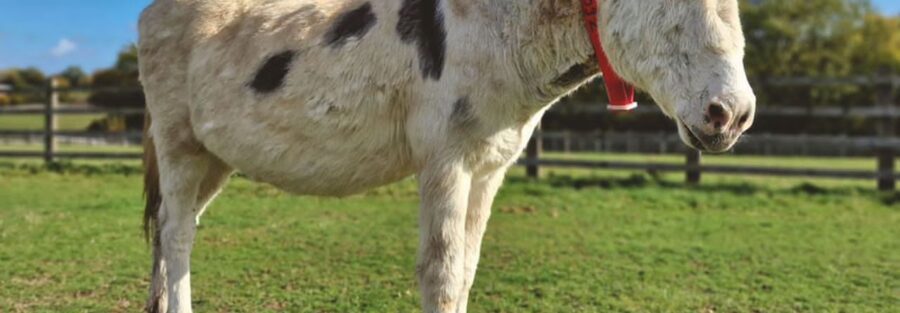Donkeys are intelligent and social animals that thrive on interaction and mental stimulation. Training your donkey not only helps in managing their behavior but also strengthens the bond between you and your animal. Using positive reinforcement techniques, you can effectively train your donkey in a humane and rewarding manner. In this comprehensive guide, we’ll explore the principles of positive reinforcement, step-by-step training methods, and tips to ensure a successful training experience.
1. Understanding Positive Reinforcement
What is Positive Reinforcement?
- Positive reinforcement involves rewarding a behavior to increase the likelihood that it will be repeated. This method is based on the principle that behaviors followed by positive outcomes will be strengthened over time.
- Rewards can include treats, praise, petting, or any other form of positive feedback that your donkey finds motivating.
Why Use Positive Reinforcement?
- Positive reinforcement builds trust and encourages a strong bond between you and your donkey.
- It creates a positive learning environment, making training sessions enjoyable for both you and your donkey.
- This method avoids the use of fear, punishment, or coercion, promoting a humane and respectful approach to training.
2. Preparing for Training
Establishing a Bond:
- Before beginning formal training, spend time with your donkey to establish a bond. Regular grooming, feeding, and gentle handling help build trust and familiarity.
- Observe your donkey’s behavior to understand their likes, dislikes, and natural tendencies. This knowledge will help you tailor your training approach.
Setting Up a Training Area:
- Choose a quiet, distraction-free area for training sessions. This helps your donkey focus and reduces the likelihood of interruptions.
- Ensure the training area is safe and secure, with no potential hazards that could cause injury or stress to your donkey.
Gathering Training Tools:
- Use a halter and lead rope to gently guide and control your donkey during training sessions.
- Have a supply of small, healthy treats that your donkey enjoys. Use treats sparingly to avoid overfeeding.
- A clicker can be a useful tool to mark desired behaviors. The sound of the clicker signals to your donkey that a reward is coming.
3. Basic Training Techniques
Halter Training:
- Start by introducing the halter to your donkey in a calm and positive manner. Allow them to sniff and investigate it.
- Gradually place the halter on your donkey, rewarding them with treats and praise for calm behavior. Repeat this process until your donkey is comfortable wearing the halter.
- Once your donkey is accustomed to the halter, attach a lead rope and gently guide them, rewarding them for following your lead without resistance.
Teaching Basic Commands:
- “Come”: Stand a short distance away from your donkey and call their name followed by the command “come.” Use a treat to lure them toward you, rewarding them when they reach you. Repeat this exercise, gradually increasing the distance.
- “Stand”: Use the command “stand” while gently applying pressure on the lead rope to stop your donkey’s movement. Once they stand still, reward them with a treat and praise. Practice this command to reinforce the behavior.
- “Walk”: Begin walking with your donkey, using a consistent command such as “walk.” Reward them for moving forward without pulling or lagging behind. Practice this command during daily walks to reinforce the behavior.
Desensitization:
- Introduce your donkey to various stimuli, such as different surfaces, objects, and sounds, in a controlled and positive manner. This helps them become confident and less reactive to new experiences.
- Reward calm behavior when exposed to new stimuli, gradually increasing the intensity or proximity of the stimuli over time.
4. Advanced Training Techniques
Loading into a Trailer:
- Start by familiarizing your donkey with the trailer. Allow them to explore the area around the trailer and offer treats and praise for calm behavior.
- Gradually lead your donkey toward the trailer, rewarding them for approaching and stepping inside. Take small steps and avoid rushing the process.
- Practice loading and unloading in short sessions, ensuring each experience is positive and stress-free.
Training for Work or Performance:
- If you plan to use your donkey for tasks such as cart pulling or pack carrying, introduce the equipment gradually. Allow your donkey to investigate the gear before placing it on them.
- Use positive reinforcement to reward your donkey for accepting the equipment and performing tasks. Break the training into small, manageable steps to avoid overwhelming your donkey.
- Consistency and patience are key to successful training for work or performance tasks.
5. Tips for Successful Training
Consistency:
- Use consistent commands and cues for each behavior to avoid confusion. Ensure all handlers use the same language and techniques.
- Maintain a regular training schedule, with short, frequent sessions to keep your donkey engaged and focused.
Patience:
- Donkeys are intelligent but can be stubborn at times. Patience and persistence are essential to successful training.
- Progress at your donkey’s pace, and avoid pushing them too hard. Celebrate small successes and build on them gradually.
Positive Reinforcement:
- Always end training sessions on a positive note, rewarding your donkey for their efforts. This helps create positive associations with training.
- Avoid using punishment or negative reinforcement, as it can damage the trust and bond you have built with your donkey.
6. Common Training Challenges and Solutions
Resistance to Training:
- If your donkey resists training, assess whether they are comfortable and healthy. Discomfort or health issues can impact their willingness to participate.
- Reevaluate your training approach to ensure it is positive and rewarding. Adjust the difficulty level to match your donkey’s abilities.
Distractions:
- Minimize distractions in the training environment to help your donkey focus. Gradually introduce distractions once basic behaviors are established.
- Use high-value treats and positive reinforcement to maintain your donkey’s attention during training sessions.
Fear or Anxiety:
- Address fear or anxiety by introducing new experiences gradually and positively. Avoid forcing your donkey into situations that cause distress.
- Provide reassurance and rewards for calm behavior, helping your donkey build confidence over time.
Conclusion
Training your donkey using positive reinforcement techniques is a rewarding and effective way to build a strong, trusting relationship with your animal. By understanding their behavior, providing a safe and supportive environment, and using consistent, patient training methods, you can successfully teach your donkey a variety of commands and tasks. Remember, the key to successful training is creating a positive, enjoyable experience for both you and your donkey. At Pasture Donkeys, we’re here to support you on your training journey and ensure your donkey leads a happy, well-adjusted life. Happy training!


